How to Start a Family Garden
Morgan Rogue 02.07.24
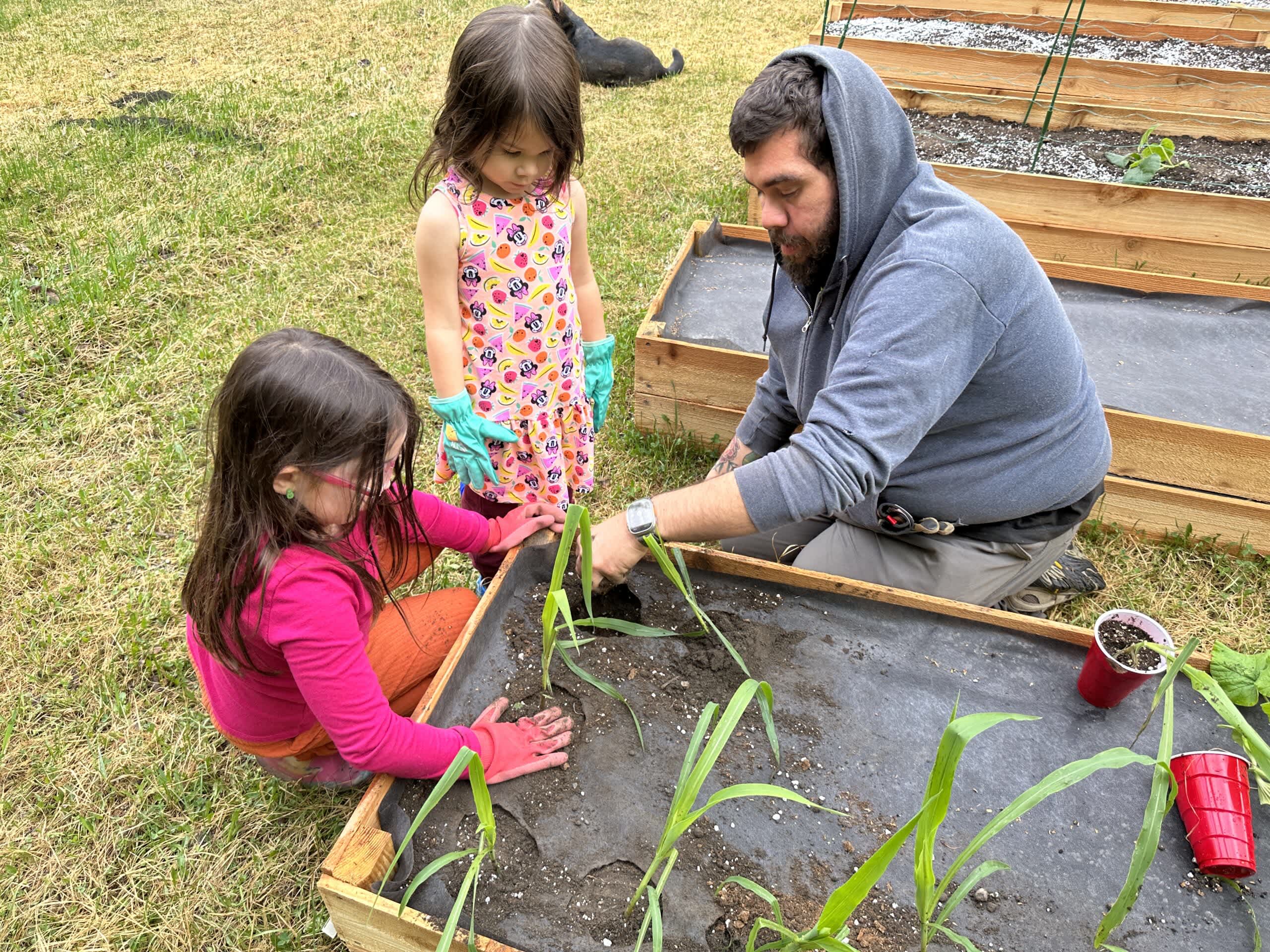
Starting a garden with the family is extremely rewarding. Not only are they investing in their work and actually want to take care of it, but they’re also seeing where their food comes from. Oh, and even better, the whole family gets to eat better when their crops start to produce! There are so many benefits to growing a garden and even more so as a family.
No matter where you live, what your background is or whether you have any experience at all; you can start a garden!
Choosing the Right Location
The location of your garden can significantly impact its success, so it’s essential to consider factors such as sunlight, water access, and proximity to your house.
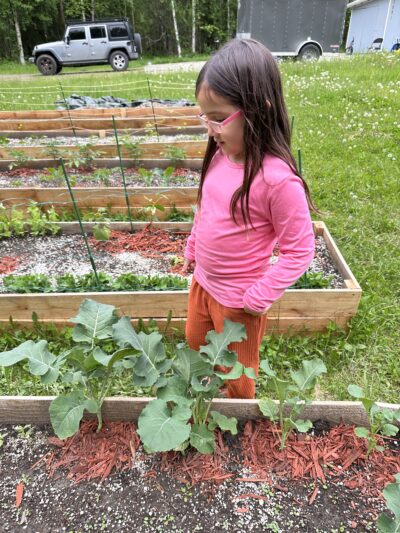
Sunlight Matters
Ensure that the chosen location receives an adequate amount of sunlight. I had to watch my property for several months to determine the best spots. If you choose to container garden your first year, the benefit of this is that you can move the containers around in the shade if it gets too hot or into more sun if they aren’t getting enough.
Proximity to Water
Consider the proximity of the chosen location to a water source. It’s beneficial to have easy access to water for irrigation, especially during dry spells. If the area is far from a water source, you may need to plan for installing a drip irrigation system or carrying water to the garden or a really long hose. You can also create a rainwater catchment system right next to the garden and let it gravity feed with a hose.
Soil Quality and Drainage
Assess the soil quality and drainage of the area. Perform a simple soil test to check the soil’s pH level and composition. Well-draining soil is crucial to prevent waterlogging, which can lead to root rot and other plant problems. Consider raised beds if the soil quality is poor. If you are choosing to use containers
Selecting Suitable Plants
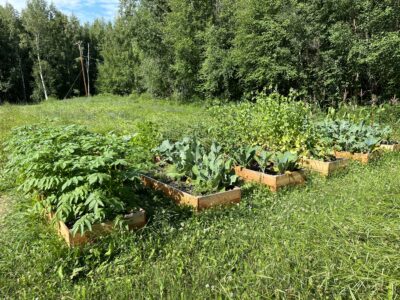
Vegetable Garden
In a family garden, a vegetable patch can be a great way to introduce children to the joys of gardening and healthy eating. When selecting vegetables for your garden, consider options that you know you and your family will eat. Let the whole family decide which vegetables they want to plant. Then throw in a few options that you’d like to experiment and try with.
Don’t forget about the flowers! My kids love to plant flowers and they’re extremely beneficial to a vegetable garden.
Fruit Garden
Growing fruit in your family garden can be a rewarding experience for all. If space allows, consider planting easy-to-care-for fruits such as strawberries, raspberries, and blueberries. These fruits are not only delicious and nutritious but also relatively low-maintenance, making them ideal for beginners. You’ll want to purchase plant starts from the store so they can provide much quicker. Though be aware that they can take time to produce a lot of fruit.
Garden Design
Raised Beds and Containers
For individuals with limited outdoor space or poor soil quality, raised beds and containers offer a practical solution for cultivating a thriving garden. Raised beds provide better drainage, warmer soil, and easier access for planting and maintenance. Similarly, containers such as large pots or hanging baskets are versatile and can be placed on patios, balconies, or windowsills, enabling anyone to enjoy the benefits of gardening, regardless of space constraints. Additionally, container gardening minimizes the risk of soil-borne diseases and allows for easy repositioning based on sunlight and weather conditions.
Soil Preparation and Maintenance
When starting a family garden, one of the fundamental keys to success lies in the preparation and maintenance of the soil. By taking the time and effort to ensure your soil is conducive to healthy plant growth, you are setting the stage for a thriving garden that the whole family can enjoy.
Testing Your Soil
Before you begin any soil preparation, it’s crucial to test the soil in your chosen area. However, if you plan to purchase bagged soil and other amendments for raised beds or containers, testing the soil isn’t necessary. However, if you plan to use the soil, you may have to amend it. Most soil can be used, but it may just have to be amended with compost or other nutrients.
Composting for Nutrient-Rich Soil
Composting is a cost-effective and sustainable method to improve soil quality. By recycling kitchen scraps, yard waste, and other organic materials, you can create nutrient-rich compost to enhance your soil. If you don’t make your own compost, you can purchase compost and every single plant will be happy with some addition of compost as the nutrient source.
Mulching for Moisture Retention
Mulching the soil offers multiple benefits for your garden. It helps to conserve moisture, suppress weed growth, and regulate soil temperature. In hot areas and/or dry areas, it’s especially important to mulch so you aren’t losing the water as soon as you add it. Materials such as grass clippings, straw, or bark chips make excellent mulch.
Regular Watering and Weeding
Achieving a balance in watering is key, ensuring the soil remains consistently moist but not waterlogged. More so, some plants prefer far less water than others, so it’s important to understand which do better with less and which do better with more. This can be accomplished by doing some research on what you plan on planting.
Involving Kids in Gardening
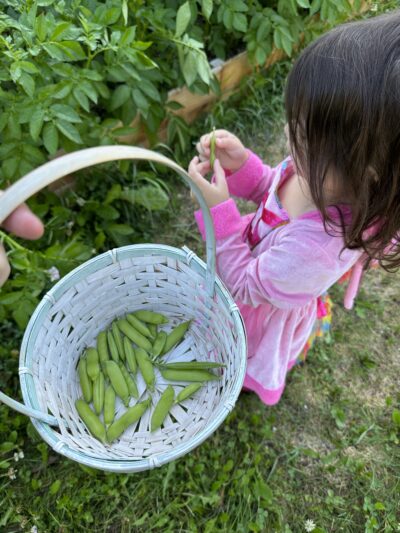
Choosing Age-Appropriate Tasks
When involving kids in gardening, it’s important to consider age-appropriate tasks. Younger children can start by helping with simple activities like watering the plants, planting seeds, or picking ripe vegetables. As they grow older, they can be given more responsibilities, such as weeding, mulching, or even planning and designing a small section of the garden. My kids are involved in just about the whole process. They absolutely love going out into the garden to help pick produce.
Making Gardening Fun
Let kids have their own space. While they are investing their time and energy in the garden as a whole, giving them their own little container or space of a raised bed, they will feel more empowered.
Learning Opportunities
Gardening provides numerous educational opportunities for kids. Use gardening as a chance to teach them about the life cycle of plants, the importance of sunlight and water, and the benefits of organic gardening. You can also encourage them to keep a gardening journal where they track the growth of their plants, note observations, and draw pictures of their findings. This not only fosters their learning but also nurtures a sense of appreciation for nature.
Dealing with Common Garden Challenges
Pesky Pests
Dealing with pests can be a frustrating part of gardening, especially when trying to maintain an organic and family-friendly environment. However, there are several effective methods to keep pests at bay without resorting to harmful chemicals. One of the best ways is to companion plant and plant plenty of ‘good bug’ plants and flowers. If you can atract ladybugs, spiders and praying mantises to your garden, they will keep the bugs at bay.
For larger animals such as deer or moose, an electric fence has proven to be the most effective way of keeping them out. There are many old wives’ tales out there, but an electric fence is cheap and easy to install and keeps them out of your garden.
Disease Prevention
Preventing diseases in your family garden starts with good gardening practices. Ensure proper spacing between plants to promote air circulation and reduce the risk of disease spread. Regularly inspect your plants for any signs of disease, such as discoloration or unusual spots, and promptly remove any affected foliage to prevent further spread. Using disease-resistant plant varieties and practicing crop rotation can also help minimize the risk of diseases taking hold in your garden.
Seasonal Challenges
Extreme temperatures, drought, or excessive rainfall can pose significant challenges to your plants. Implementing organic mulching techniques can help regulate soil temperature and moisture levels, providing a buffer against seasonal extremes. Additionally, investing in season-extending tools like row covers or cold frames can help protect delicate plants from unexpected frosts. Investing in shade cover to protect plants from extended heat waves is also recommended.
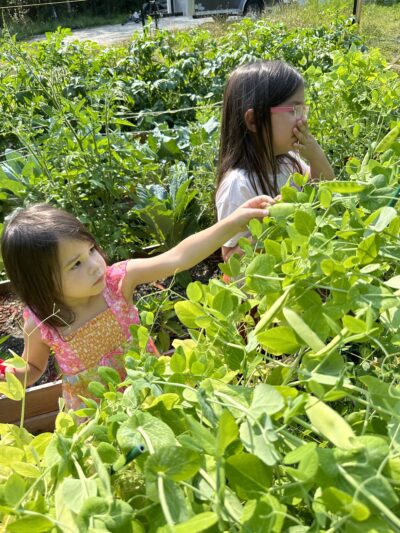
Harvesting and Enjoying the Fruits of Labor
Savoring Fresh Fruits and Vegetables
One of the most rewarding aspects of having a family garden is the opportunity to enjoy nature’s gifts at their peak of freshness. Whether it’s plucking ripe tomatoes, picking juicy strawberries, or pulling up crisp carrots, the flavors and textures of freshly harvested produce are unmatched. Encourage your family to savor the simple pleasure of biting into a just-picked fruit or vegetable, connecting with the earth’s bountiful offerings tangibly and deliciously.
Preserving the Harvest for Future Enjoyment
Extend the enjoyment of your family garden’s yield by preserving the surplus for later use. From canning and pickling to freezing and drying, explore which options are going to best for you. I promise, if you can read, you can learn to preserve. It’s not as scary as it sounds. By engaging in these activities as a family, you not only ensure year-round access to your homegrown produce but also create lasting memories and traditions that your children will cherish.
Conclusion
Starting a family garden is not just about growing vegetables and fruits; it’s about nurturing a sense of togetherness and creating lasting memories. It’s a hands-on way to teach children about the environment, healthy eating, and the satisfaction of seeing the fruits of their labor.
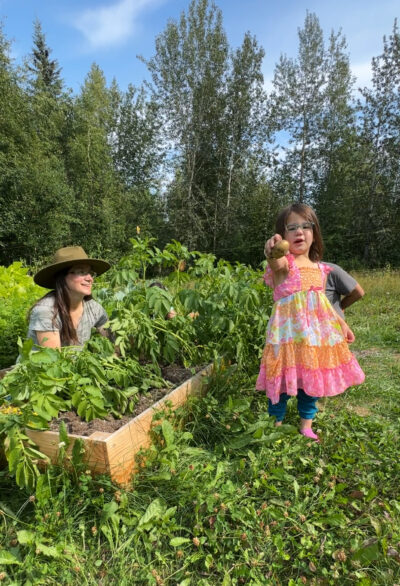
And remember, it’s ok if you fail! Gardening is a learning experience year after year and every single year is different when it comes to weather and rainfall. Research what you want to plant, figure out where you’re going to plant it, then have fun with it!

